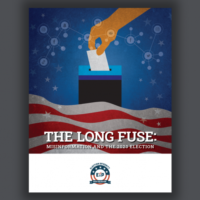Over the past decade, the spread of disinformation online has become a problem facing the U.S. and the world. Increasingly, domestic and foreign adversaries have used it as a way to unleash chaos on democratic processes, upend democratic norms and weaken confidence in public institutions, according to Stanford scholars.
While propaganda and disinformation have long been used by malign actors to intentionally mislead and manipulate the public, disinformation online can spread fast and far across networks anonymously, cheaply and efficiently, making it a challenging problem to address. The internet and social media platforms have become “weaponized” to purposefully confuse, agitate and divide civil society, said Eileen Donahoe, executive director of Stanford’s Global Digital Policy Incubator and former U.S. Ambassador to the UN Human Rights Council.
“Democratic governments are now seized with the fact that digital information platforms have been exploited by malign actors to spread propaganda and disinformation, wreaking havoc on democratic elections and eroding trust in the digital information realm,” said Donahoe in an online commentary published by the Stanford’s Cyber Policy Center.
Donahoe and Stanford scholars from across the social sciences are studying the threats disinformation poses to democracy and also other areas of public and private life, such as health and education. In many instances, researchers are providing specific recommendations for what governments, digital platforms and the public can do to counter its deleterious effects.
Here are some of those findings and recommendations, as well as insight into the role disinformation played during the global pandemic and more recently, the Russian invasion of Ukraine.





























